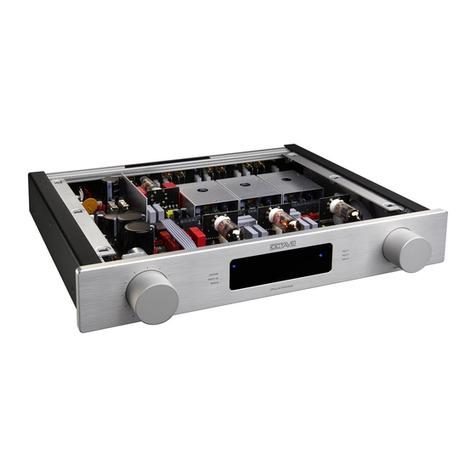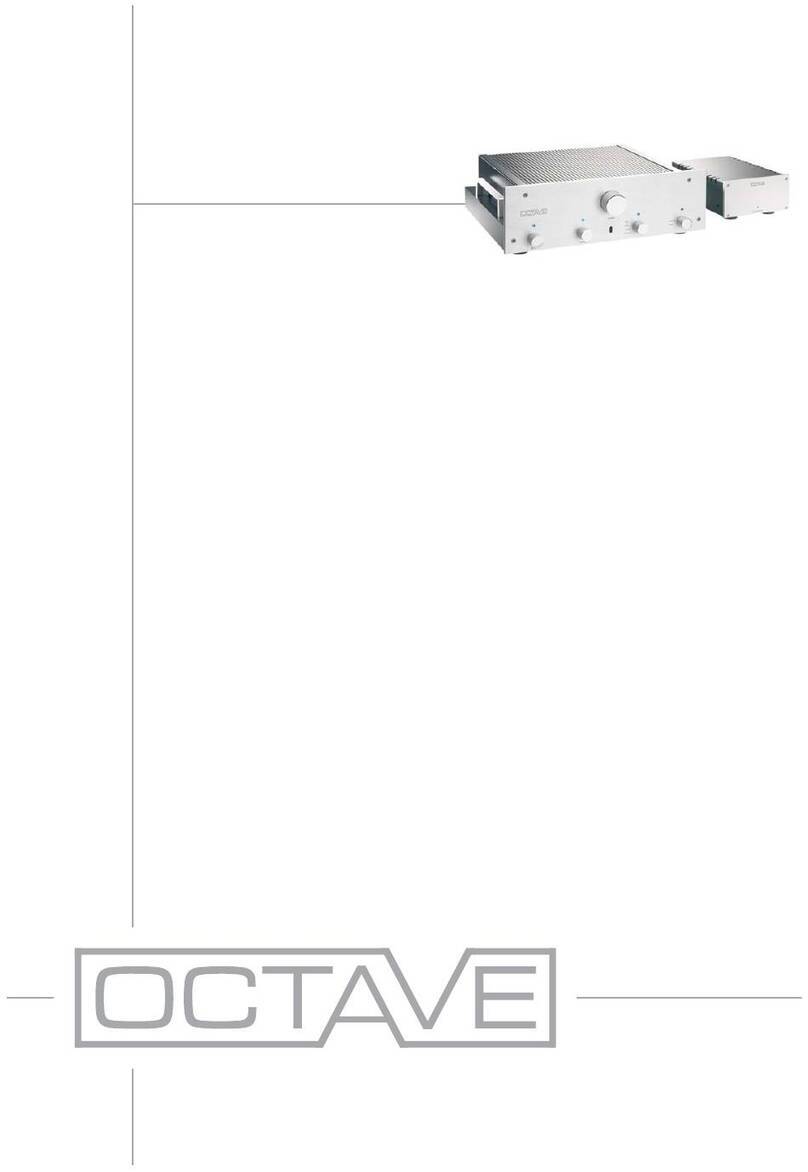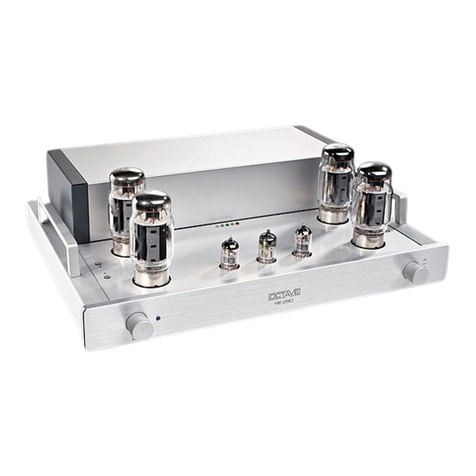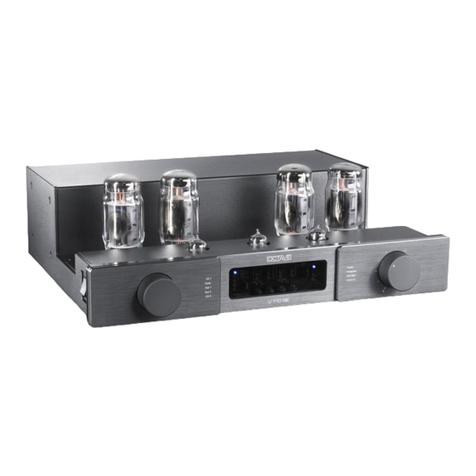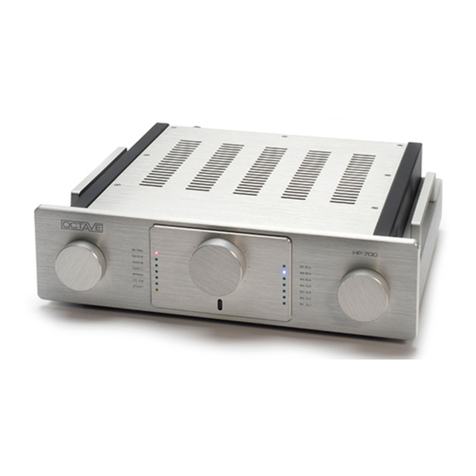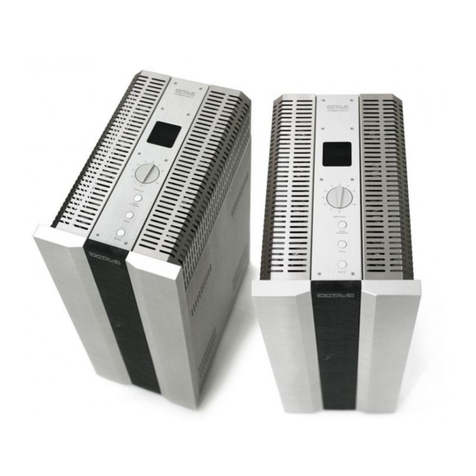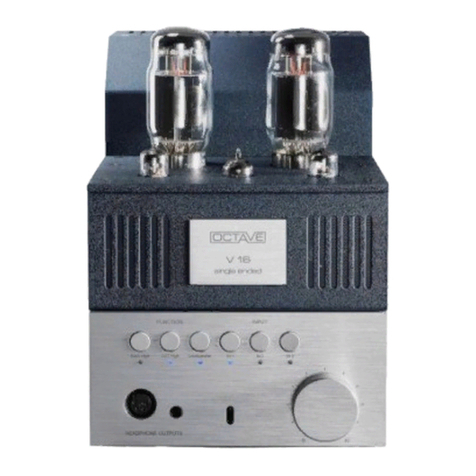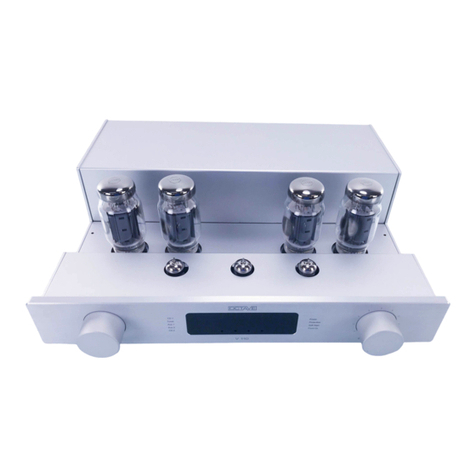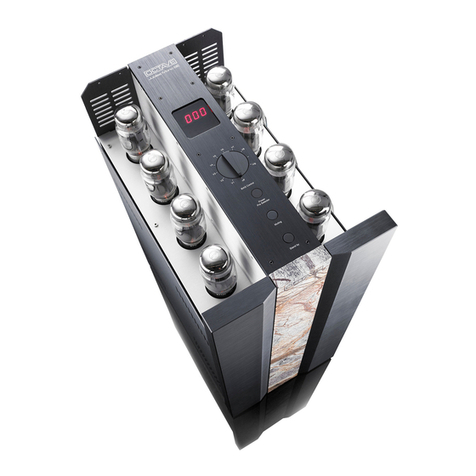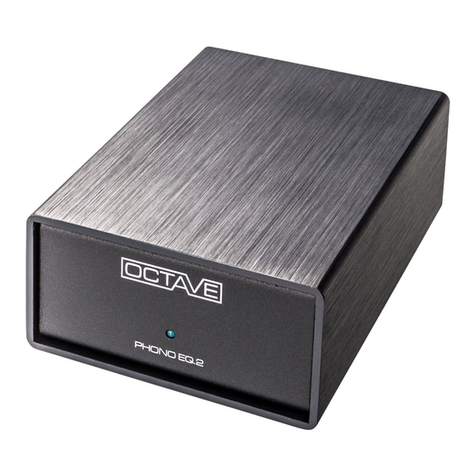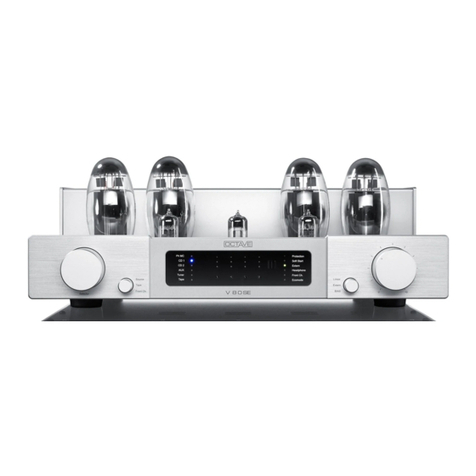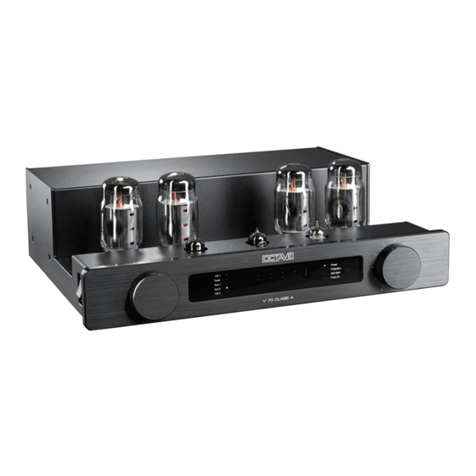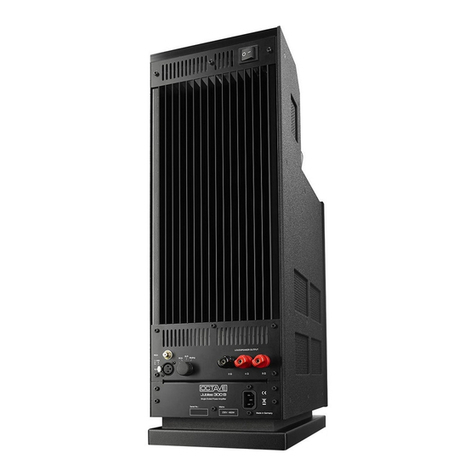
7
1. OCTAVE TECHNOLOGY
1.2. About the RE 280 MK2
The RE 280 MK2 stereo amplifier is a push-pull power amplifier in ultralinear
configuration. Power output is approx.2 x 70W at 2% THD.
OCTAVE power amplifiers have always set new standards in sound and
reliability.
POWER
MANAGEMENT
With the introduction of his RE 280 stereo power amplifier, Andreas Hof-
mann left traditional power amp technologies far behind. It goes without
saying that this amplifier - like all OCTAVE products - included OCTAVE's
proprietary Power Management and protection electronics.
The Power Management system monitors and controls the heating and
supply voltages at switch-on. This is tremendously important in extending
the service life of the tubes and maintaining a consistent sound. It also re-
lieves the power supply components of the strain of handling huge surge
currents at turn-on.
PROTECTION
SYSTEM Many manufacturers neglect to include electronic or even passive protection
systems in their tube amps, which means that the life - and indeed the op-
erational safety - of these amplifiers is greatly dependent on factors over
which the user has no control. OCTAVE fits its power amplifiers with an
electronic protection system as a matter of course.
LOAD STABIL-
ITY The technical breakthroughs that set the original RE 280 apart were its op-
timized input gain section and power supply. Indeed, it used a totally new
power supply design, featuring double star-earthing and supply voltage iso-
lation. The optimization of the input stage provided absolute immunity from
influences such as the loudspeaker load, together with excellent phase sta-
bility for highly accurate push-pull operation and an extension of the usable
frequency range up to 80kHz. From a sound quality point of view, these
enhancements delivered a consistent tonal performance that remains inde-
pendent of the impedance response and efficiency level of the speakers.
BIAS
A further effective feature is the Bias measurement facility.
Unlike the simpler class-A power amplifier type, AB amplifiers
require adjustment of the negative grid bias to optimize the idle current for
the power tubes. The setting can change as the tubes age and it must also
be adjusted whenever tubes are replaced. Normally, this requires test
equipment and a knowledge of what and where to measure, but with the RE
280 MK2, you can check and adjust the bias any time the amp is on.
This adjustment has a huge influence on the sound quality and performance
characteristics of an amplifier (see diagram 1 under Technical Data).
